🚀Chapter #1 AUDIT USA – Understanding the Past to Protect the Future of Elections, Democracy and Our Democratic Republic
Chapter # 1 This eBook will be released in chapters before being compiled into a complete volume. It includes Video and Audio 4/11/25 2PM V1.7
Chapter 1: Analyzing the Evolution of United States Elections and Democracy
🎥 Now Available – Chapter 1 Video: Right below
“AUDIT USA –Video- Analyzing the Evolution of United States Elections and Democracy”
Explore the foundations of election transparency through this engaging short video that brings the story to life. Chapter #1 highlights the pivotal battles, key breakthroughs, and hard-earned lessons that have defined our ongoing fight for publicly verifiable elections. Chapters 11 and 17 on my Substack.
To truly understand how American elections have evolved—and where they're headed—we need more than just a front-row seat at a Logic and Accuracy (L&A) test. While an L&A test checks whether voting machines are functioning correctly at that moment, it is not an audit. That distinction is noteworthy. Further details can be found in Chapter 11A.
Genuine understanding requires immersion: meeting election officials, learning the systems—hardware and software—and navigating two distinct cultures that shape our voting process: the administrative and the technological. It means confronting the problems that form the backbone of our election systems—issues largely invisible to people who don’t do this work every day.
My journey began in 2004 in Tucson, Arizona, after moving back from Mexico in 2002.
I focused on Pima and Maricopa Counties during the controversial Bush vs. Kerry presidential election. Maricopa was then the fourth-largest county in the country. Today, it's the second largest.
Since that time, through investigations, litigation, and direct reform initiatives, we have endeavored to highlight both the risks and solutions associated with election transparency. Presented here are some of the most significant moments and lessons learned, particularly from the 2020 Maricopa County audit and the 2006 RTA election.
What I Learned from the 2020 Maricopa Audit
In April 2020, I entered the Maricopa County audit as Deputy Liaison to the Arizona Senate, collaborating closely with former Secretary of State Ken Bennett.
I came in with an open mind. I left with a hard-earned truth:
That Truth is a Civic Duty
Inside the so-called Maricopa audit, I expected disorganization—but what I found was worse: a stage-managed production run by grifters, hiding behind the language of Patriotism and God.
Yet amid the chaos, I also met admirable individuals—honest, diligent volunteers—who were being misled. Drawing on my experience as a psychotherapist in the 1970s, I recognized how peer pressure and groupthink can distort perception and lead well-meaning people down dangerous paths.
Groupthink is defined as the phenomenon where collective thinking within a group becomes limited, causing members to believe there is only one correct answer or solution. Suggesting alternative ideas is often perceived as an act of disloyalty.
The more I observed, the more I realized these people didn’t need condemnation—they needed clarity.
Truth presented with compassion can cut through confusion better than confrontation ever could.
I encountered individuals who I refer to as "Parrot Election Experts"—people who were best talkers, but the worse producers, lacking real expertise and unwilling to let professionals get close to the truth. They were more interested in posturing than problem-solving. Qualified experts were deliberately excluded, potentially to prevent exposing the superficiality of their operations under real scrutiny.
As someone with deep experience in election auditing, I had no trouble debunking some of their wildest theories. But the real challenge was not defeating bad ideas—it was reaching the good people caught in their orbit.
One of the most notorious “con artists” to emerge from this Maricopa audit was Jovan Hutton Pulitzer, not his real name.
A self-styled technical expert who built his brand by spinning easily debunked conspiracy theories.
On October 1, 2022, Pulitzer returned to Maricopa County, peddling yet another false narrative—this time claiming that accessible voting stations for people with disabilities were used to hijack votes for Joe Biden.
He claimed that the machines used a built-in library of images to “fill in” ovals next to Biden’s name, suggesting over 188 million ovals needed to be individually examined.
These claims are completely unfounded.
“He’s talking about machines that don’t even exist,” journalist Steven Rosenfeld. “He doesn’t even realize that 91% of the county’s presidential ballots were mailed out and returned in signed envelopes.”
He’s talking about machines that don’t even exist in Maricopa Co Elections, journalist Steven Rosenfeld. “He doesn’t even realize that 91% of the county’s presidential ballots came in returned in signed envelopes.”
Sadly, truth wasn’t what most Grifters involved in the audit were selling. Once the grifters took control, the playbook became clear:
Declare the election stolen and then ask for donations to “save the republic.”
It’s a profitable business model—especially when amplified by a former president claiming his election was stolen. With that kind of endorsement, raising millions becomes easy.
Pulitzer’s actions and reputation have stirred significant controversy, particularly regarding his attempts to manipulate public perception of election integrity through unfounded claims.
Pulitzer position as a "parrot expert" reflects a broader issue with certain individuals who leverage media attention and persuasive rhetoric without offering substantive contributions or solutions, effectively harming the credibility of genuine efforts aimed at improving democratic systems.
The Cost of Silence
Looking back, I see that the so-called audit didn’t begin with a hand recount. It began with an 11-hour public spectacle on November 30, 2020—what I call Rudy Giuliani’s Grifter Show. That wasn’t a hearing; it was an infomercial to fire up the MAGA base.
Grifters avoid real press conferences. They sidestep tough questions. Instead, they turn out propaganda—film like The Deep Rig and stage-managed Senate “hearings.” No accountability, No transparency just control.
One of the biggest mistakes Democrats made was pretending the audit would just fade away. “Don’t participate,” they said. “Ignore them.” That only made things worse. They created a vacuum filled with misinformation, where I was often the only dissenting voice in the room.
Because I engaged in good faith, I was vilified. I was called a traitor. I received threats and hateful emails. I saved them all. Because echo chambers don’t solve problems. Only facts do.
As my longtime friend and Arizona attorney Bill Risner once told me:
“John, you're not crossing the line. Truth is a public service.”
Bill also taught me something important about grifters: they never file defamation lawsuits. Why? Because they'd have to testify under oath—and that would be their undoing. To win a defamation case, a public figure must prove that a false statement was made with “actual malice”—that it was knowingly false or made with reckless disregard for the truth. Grifters can’t survive that level of scrutiny.
Letting Truth Drive the Narrative
We cannot defend democracy by rewarding spectacle over substance. It’s time we stopped letting grifters write the script. Get involved!
Truth is not partisan. Truth is a civic duty.
A Culture of Concealment: Historical Division of Responsibility
Under Arizona’s constitutional framework, election responsibilities are divided in a way that should promote transparency and accountability:
• The Recorder tracks and reports how many people voted. • The Board of Supervisors counts the ballots and certifies the final results.
These two numbers must align. When they do, it indicates a system operating with integrity.
When they don’t, it’s a red flag—one that demands immediate investigation.
Unfortunately, across the U.S., many election officials often prioritize avoiding scrutiny over acknowledging and fixing problems. This mindset, shaped by an outdated philosophy, has quietly entrenched a culture of concealment in election administration.
Hiding the Warts in Elections
Former Pima County Elections Director Brad Nelson once told me:
“I know I’ve done a good job when I wake up the morning after the election and my name isn’t in the newspaper.”
At first glance, which may seem like a harmless comment. But its implications are troubling. Nelson wasn’t an outlier—he was influenced by R. Doug Lewis, longtime head of the Election Center in Texas, a central figure in training and certifying election officials nationwide.
Lewis is widely credited—or criticized—for promoting what’s known as security by obscurity." According to multiple sources, he famously told trainees:
“A good election administrator is someone who knows how to hide all the warts.”
This philosophy taught a generation of officials to prioritize the appearance of order over actual accountability. Rather than confront vulnerabilities, many learned to manage problems quietly, behind closed doors.
While this may protect reputations, it does nothing to build public trust. In fact, it does the opposite: it breeds suspicion, undermines confidence, and corrodes the foundation of our democracy.
Example: Pinal County, Arizona – 2022 General Election
Pinal County Election officials failed to reconcile a basic discrepancy: the number of voters didn’t match the number of ballots counted.
Rather than investigate or disclose the issue, they appeared to ignore or conceal unaware that a mandatory statewide recount was on the horizon.
That recount uncovered 507 uncounted ballots. Among them, candidate Abe Hamadeh gained 392 votes—cutting his deficit against Kris Mayes to just 280 votes statewide, out of over 2.5 million cast.
This wasn’t just a clerical oversight. It was a fundamental failure of election oversight—amplified by the “hide the warts” culture. In any other field, such a discrepancy would trigger an immediate audit. But in elections, it often gets swept under the rug—until it explodes into public view.
Pinal County’s election director got a $25,000 bonus after reporting inaccurate results
Virginia Ross was paid $200,000 to conduct a smooth election, but it was marred by inaccuracies
January 5, 2023 Jen Fifield is a reporter for Votebeat. She previously covered Maricopa County and Phoenix for The Arizona Republic, including the high-profile review of the county’s 2020 election. Link to this story
May 5th 2023, Jen Fifield/VOTEBEAT: Pinal County elections director saw glaring errors, cashed out, then fled
In the wake of a troubled 2022 election, Pinal County Elections Director Virginia Ross was awarded a $25,000 bonus—despite well-documented problems with the accuracy and administration of the vote.
Ross was brought in late in the election cycle and paid $200,000 to “ensure a smooth election.” But according to reporting by Jen Fifield of Votebeat on January 5, 2023, serious procedural missteps occurred under her watch. Standard safeguards—such as reconciling the number of voters with the number of ballots cast, balancing pollbooks, and conducting proper precinct-level audits—were either not followed or hastily done. The result: a flawed and unreliable vote count.
County certification to the State was due by November 29, giving Ross sufficient time to identify and correct these discrepancies. Instead, the process was rushed. Ross certified the results, collected her $25,000 “performance bonus,” and left the state reportedly the next day—without providing any contact information for follow-up or accountability.
To understand how this unfolded, I recommend reviewing the following sources:
Video: Nov. 21, 2022 Special Session Pinal County Board of Supervisors to Certify the Election - 24 minutes
Video: Jan 4, 2023 Special Meeting of the Pinal County Board of Supervisors discussing the election process – 1 hour 12 minutes
By Jen Fifield Vote Beat May 5, 2023 “Arizona voters were told the election went fine. Records show a county director saw glaring errors, cashed out, then fled. Pinal County elections chief Virginia Ross had proof of inaccuracies that she didn’t flag before county supervisors certified the November election results. A Votebeat investigation found. Instead, she told them she stood by the numbers — and then collected a $25,000 bonus.”
John Brakey: In my view, this wasn’t just bureaucratic failure—it was a deliberate effort to rush certification and obscure problems in order to collect a bonus. In plain terms, it looks like an attempt to “hide the warts.” That’s more than bad judgment. It erodes public trust in our electoral process.
Sadly, this is not an isolated incident. It reflects a broader culture I’ve encountered in Election Departments across multiple states over the past 21 years. Exposing these patterns is the first step toward reform. Because only through transparency—true, verifiable transparency—can we rebuild trust. Transparency is the currency of trust in a functioning democratic republic.
The solution lies in straightforward transparency and genuine public verification by collaborating with programs such as ABE.
A Culture That Punishes Public Oversight
The problem isn’t limited to one county. It reflects a national mindset—where raising legitimate concerns can get you silenced, mocked, or labeled a “conspiracy theorist.”
Here’s a revealing footnote from Pinal County:
Just days before certification, the outgoing elections director—on the verge of retirement and moving to Texas—was awarded a sizable bonus for “running a good election.” At that very meeting, a concerned citizen stood up and warned:
“The numbers don’t work. There are ballots missing.”
He was laughed off and dismissed. But the recount proved him right.
This should have been caught at the county level—before certification. Yet it took a statewide recount to reveal what should have been obvious.
I have been involved in this field for 21 years. During this time, I was arrested twice and successfully defended myself in both instances, which led to significant changes. Furthermore, I have encountered several assaults and threats. A particularly challenging experience has been ongoing for the past few years; I was sued for requesting public records. That story will be covered in another chapter very soon.
At AUDIT USA, we have developed an application called "ABE," which is a macro specifically designed for Microsoft Excel. This election database, applicable to all digital voting systems, operates as a spreadsheet of rows and columns.
To learn more, watch this video featuring former Secretary of State of Arizona, Ken Bennett, explaining how ABE functions. Additionally, please pay special attention to Bennett’s five recommendations for restoring confidence and combating the cynicism that is undermining our nation. Link to watch Ken’s 5 points:
A System Designed to Obstruct Public Scrutiny
Access to original paper ballots or ballot images is restricted in many states.
In Arizona, a machine recount is only triggered if the margin is less than 0.1%. In 2023, this threshold was raised to 0.5% (see ARS §16-661). While this change is unlikely to alter the election outcome, it may reveal numerous discrepancies.
Despite this, the original ballot or its image are still not publicly reviewed. Additionally, recounts are significantly costly. We propose making ballot images accessible online by precinct, allowing individuals to retrieve the cast vote record database, prepared with hyperlinks, and have the images available in the cloud for straightforward verification.
Even then, recounts are often procedural reruns—without access to the actual paper ballots or digital images used in the original tabulation.
This creates a dangerous Catch-22:
You can’t examine the ballots unless you prove fraud first— But you can’t prove fraud unless you examine the ballots.
So you're stuck. Trapped by a legal bureaucratic loop designed to block meaningful oversight that protects the ‘Warts’ or ‘Hack’ from being exposed.
Wait until you read Bill Risner’s Statement of Facts on the RTA Election from 2006. It turned out it was illegal for the Secretary of State to check:
Bill Risner’s Statement of Facts filed Jan 12, 2012, pursuant to a AZ Rule 26.1
Excerpt from above link deposition Page # 9.
“3. The Arizona Secretary of State Agrees It Is Easy To Cheat and State Law Prohibits Them from Checking County Computers To Find Out If Counties Are Cheating.”
During the “database lawsuit” the Office of the Arizona Secretary of State was deposed pursuant to Rule 30 (b)(6) of the Rules of Civil Procedure. The Office produced Joseph Kanefield, then Arizona’s Election Director, to testify on behalf of the Office of the Secretary of State. The State Election Director confirmed that the insecurity of election software “is no secret” and is known all over the country.
During Mr. Kanefield's deposition he was asked about a statement in the iBeta report released by the Attorney General which had been given to the Secretary of State and was a deposition exhibit.
Q. BY MR. RISNER: On page 3, there's an “Executive Summary and there's a statement that says, “During testing it was discovered that the GEMS software exhibits fundamental security flaws that make definitive validation of data impossible due to the ease of data and log manipulation.” Would you agree that that's an accurate statement about the GEMS software?
....(Kanefield 58: 19-25; 59:1, Exhibit 1, attached)
Mr. Kanefield responded:
...Yes, we did get this report. And we've seen many other reports that have come to similar conclusions about not just the equipment manufactured by Premier – formerly known as Diebold – but other companies.
...So this is no secret. These issues have been known by not only our office but election offices all over the country.
(Kanefield, Exhibit 1, 59: 25, 60: 1-4 and 15-17)
If the vulnerability of our state’s computerized election system is known to the Arizona Secretary of State one might assume that they have examined one or more of our county election databases or, at least, that they could do so if they wanted to do so. Such an assumption would be wrong.
On April 11, 2008, the Pima County Democratic Party and the Pima County Board of Supervisors took the previously mentioned deposition of the Office of the Secretary of State. The Secretary of State chose Joseph Kanefield, the “State Election Director,” to testify under oath on behalf of the Office concerning some fourteen topics and to provide official answers on behalf of the Secretary of State. Mr. Kanefield is an attorney who previously handled election matters within the Attorney General’s office.
Mr. Kanefield was asked by Mr. Risner:
Q.... First, can we clearly establish that your office never has gone in and examined a database to see if there’s been any fraud or manipulation?
A. Our office doesn’t have the authority, under law, to do such an examination...
(Deposition transcript, 65:22-25 to 66:1)
Q. Are you aware of any county in Arizona that has ever conducted a post- election examination of the database for evidence of fraud or manipulation?
A. I am not aware, other than what’s occurred in Pima County. But that doesn’t mean it hasn’t happened. It’s just that I’m not aware.
Q. Okay. So the result, then, is that the Secretary of State, because it has no authority to, does not examine and has never examined an election database after an election in any county in Arizona, correct?
A. That is correct.
(Deposition Transcript, 67:3-15)
The reference to “what’s occurred in Pima County” was to the lawsuit filed by the Democratic Party that resulted in his deposition. In other words, neither the Secretary of State nor any County Board of Supervisors had ever examined any computer database in Arizona.
The most surprising part of the answer is the official position of the Office of the Arizona Secretary that it “has no authority” of law to examine any computer election database in Arizona. That lack of authority was the asserted reason why they had never looked. The law does not allow them to look.
The Pima County Democratic Party requested, prior to the 2006 general election, for Pima County to make numerous changes in the physical security of its election computer.
Those physical changes have made it impossible for the election computer to be hacked into by “outsiders” and collectively constitute major security improvements. Since then, however, the major security risk has consistently been identified by election security analysts as coming from “insiders,” such as vendors and election department personnel: the physical protection of the computer is only part of the necessary security for any election.
Another surprising point of testimony from the Secretary of State's office was that it had “no responsibility” to examine even the elemental issue of the physical security of election computers. In other words, when the Secretary of State sends a representative to each county for the so-called logic and accuracy test before elections, they are unable to examine the actual physical security of the election computers. They are unable to do so because the Secretary of State claims it is not one of their legislatively required tasks.
Q. By Mr. Risner: Does the Secretary of State, county by county, examine the physical security of its election computers?
A. Mr. Kanefield: Well, we're not tasked with that responsibility of actually physically examining and auditing the security . . .
(Deposition Transcript, 79:16-21)
The reference to “what’s occurred in Pima County” was to the lawsuit filed by the Democratic Party that resulted in his deposition. Neither the Secretary of State nor any County Board of Supervisors had ever examined any computer database in Arizona.
And this brings us full circle:
The most critical piece of evidence in any election is the hand-marked paper ballot created directly by the voter which was turned into a ballot image.
If ballot images cannot be publicly verified against the CVR, the system lacks transparency.
Such a system constitutes a black box.
A System That Wrongfully Limits Public Examination of Electoral Processes
Most states conduct election audits that are woefully inadequate. In many cases, access to original paper ballots—or even ballot images—is heavily restricted, making true public oversight nearly impossible.
In Arizona, for example, a candidate cannot request a recount—even if they're willing to pay for it. A machine recount is only triggered automatically if the margin of victory is less than 0.5% (as of 2023, up from the previous 0.1% threshold per ARS §16-661).
While such recounts rarely change election outcomes, they often reveal numerous irregularities—the “warts” that should have been caught during the certification process.
Unfortunately, in most jurisdictions, officials still do not conduct public reviews of the original ballots or the ballot images. In Arizona, ballot images are stored by batch, not by precinct—making targeted auditing much more difficult. A single batch of 200 ballots may include votes from 200 different precincts.
Worse still, the batches that are audited are pre-selected from early vote-by-mail returns—before Election Day. These are often tagged as “audit batches,” effectively tipping off any potential bad actor to avoid tampering with them. This defeats the purpose of a meaningful audit.
One exception is Maricopa County, which has implemented an excellent system for electronic adjudication. Election workers can securely and transparently resolve ambiguous marks on ballots using high-resolution digital images.
Another critical flaw: in the event of a recount, ballots are typically run through the same machines and same software that were used during the initial count. If those systems were flawed—or compromised—running them again won’t reveal anything new.
There’s an old saying—often misattributed to Albert Einstein—that “insanity is doing the same thing over and over again and expecting different results.”
Regardless of who said it, the message holds true:
We can’t fix what’s broken by repeating the same flawed methods and expecting a different outcome.
If we want to restore public confidence—now at historic lows—we need real transparency, not theater.
A System Built to Obstruct Scrutiny
What makes this even more troubling is that in many states, access to original paper ballots or digital images is heavily restricted. In Arizona, for instance, a machine recount is only triggered if the margin is less than 0.1%—though that threshold was raised to 0.5% in 2023 (see Arizona Revised Statute §16-661).
Even then, recounts are often procedural reruns—with no access to the actual ballots or the ballot images used to tabulate results.
This represents a classic Catch-22:
You can’t examine the ballots unless you prove fraud first—But you can’t prove fraud unless you examine the ballots.
So, you're stuck. Caught in a legal and bureaucratic loop that makes meaningful public oversight nearly impossible.
And this brings us full circle:
The most critical piece of evidence in any election is the hand-marked paper ballot—created by the voter, not the machine.
If you can’t verify that ballot or Ballot Image, you don’t have a transparent system.
You have a black box!
Conclusion: Time to Transform the Culture
It is essential to address and eliminate the harmful “hide the warts” mentality. Transparency, rather than secrecy, must underpin our electoral processes.
Real election integrity means:
1. Acknowledging errors, not concealing them.
2. Providing access to evidence, not shielding it.
3. Encouraging public oversight, not resisting it.
If we want lasting confidence in our elections, we must build systems that welcome scrutiny—not ones that are designed to hide from it.
This is not about partisanship.
This is about democracy.
A Turning Point in Maricopa County
A pivotal moment came in 2016 with the election of Adrian Fontes as Maricopa County Recorder. At that time, the Recorder’s Office held sole authority over the administration of elections in the county.
In his third year in office, Fontes spearheaded a significant transformation by reinstating Maricopa County elections to a constitutionally-based model of co-governance. He championed the return of oversight authority to the Board of Supervisors, thereby reestablishing it as the official Board of Elections, comprising five members from both major political parties.
This was more than administrative reshuffling—it was foundational reform. It reinstated a system of checks and balances, designed to ensure shared power, transparency, and accountability.
Fontes’ Election System Reforms
In addition to restoring constitutional balance, Adrian Fontes implemented a new voting system from Dominion Voting Systems, which featured:
Digital ballot images created for every hand-marked or BMD paper ballot.
A secure bipartisan adjudication process for resolving ambiguous marks.
Please watch how the system works with Electronic adjudication utilizing the ballot images. (Watch: 1:16-minute video)
Fontes also modernized Vote-by-Mail tracking, creating a system akin to Amazon package tracking. Voters could track their ballots from drop-off to tabulation.
To clarify misinformation:
Once the ballot envelope is verified, the ballot is separated and anonymized. There is no tracking number on the ballot—only on the envelope.
Short History of AUDIT AZ and Maricopa County Elections from 2004 to 2010 Rev 3.26.17.pdf - Google Drive
Collaboration with DC Election Attorney Chris Sautter: The Road Trips
In 2016, I had the honor of working alongside Chris Sautter, a brilliant attorney based in Washington, D.C., and the author of The Election Primer. Chris has been involved in nearly every major U.S. recount since 1984.
Following the chaos of Arizona’s 2016 Presidential Preference Election, Bernie Sanders campaign hired Chris Sautter to investigate irregularities. We teamed up for a deep-dive investigation that revealed serious vulnerabilities in the states and counties election voter’s database system.
AUDIT USA and I initiated legal proceedings, presenting evidence that the voter registration database had been compromised. However, our concerns were initially disregarded as implausible. Complaint link: CV 2016-002889
Lawsuit Alleges Voter Suppression in Arizona’s Presidential Preference Election
PHOENIX New Times: By Miriam Wasser April 12, 2016:
For all those Arizonans out there worried about voter suppression during the presidential preference vote, rest assured that a local activist with a history of taking on problematic elections is trying to get to the bottom of what happened here. John Brakey, co-founder of AUDIT-AZ (Americans United for Democracy, Integrity,...
In the lawsuit we alleged that the voter registration database had been tampered with, citing evidence collected during our investigation. At the time, we were called conspiracy theorists.
Months later, after the case ended, the FBI confirmed that Russian actors had indeed accessed Arizona’s voter registration database. (link to FBI confirmation.
Maricopa County Elections Sued Over Alleged Voting Violations
By Stephen Lemons August 19, 2010: A group of diverse individuals including Libertarian gubernatorial candidate Barry Hess, former Republican state Senator Karen Johnson, and voting activist John Brakey are suing Maricopa County Recorder Helen Purcell, alleging that Maricopa County Elections is involved in various voting shenanigans. Their claim, which you can read in its entirety, here,...
Link to Interesting History of AUDIT-AZ and Maricopa Elections, from 2004 to 2010 By John R Brakey March 26, 2017
AUDIT-AZ’s Election Lawsuit to Continue in Arizona on Monday
April 23, 2016 | By John Brakey In Arizona, Election Fraud, Maricopa County, U.S. Complicity, Voter Disenfranchisement
CV2016-002889
John Brakey on Wake-Up Tucson: Pima County Tried to Rig Another Bond Election - Thursday, October 29, 2015
(Watch: 11-minute video)
This is what cheating with impunity looks like.
John Brakey discussed this incident this morning on the local AM radio show, "Wake Up Tucson".
Nine years after the RTA debacle, an employee at the Pima County Elections Division broke into a sealed part of the central tabulator to hook up an ethernet connection.
Elections employee breaking the seal (he's worked there 10 years).
This occurred after the Logic and Accuracy (L&A) Test was completed and a seal was placed prominently on the closed door of the system. This, of course, was hours after I (Brakey) had left the observation room. I drove to my home, spent a couple of hours writing and emailing a number of people about the L&A Test and, by habit, hit the hot link to the election department's live feed. Moments later, I was watching the act take place before me.
2015 Pima County Bond Election Caught in the Act
The following is Brakey's letter to the Secretary of State:
To Michele Reagan Arizona Secretary of State
I am an experienced, well trained election observer for three political committees and at least one or more nonpartisan candidates on the Nov 3 ballot. (On bottom have listed groups)
On the morning of Tuesday, Oct 27, 2015, I observed the logic and accuracy test at Pima County Elections (PCE). After the testing was done (about 11am) I went to my home office to write a report of my observations and concerns in this election.
I turned on the live video feed and had it playing on my Samsung flat screen tv. For several hours as I was writing my report, I saw no activity at PCE. After I finished my report, I emailed at 2:56 pm. At about 3:00 pm, I noticed two men who earlier were part of the L & A test enter the room. At about 3:03 pm, I took the attached picture of an employee of ten years removing a security seal and connecting ethernet cables.
The second person turned on the computer. I could see that he went into a program I had observed earlier that day called ES&S “Election Reporting Manager” (ERM).
At this point I called some friends thinking that this could not be true. Maybe there were party observers out of camera range. After several more minutes passed, PCE Director Brad Nelson entered the room and sat on a chair right next to the man on the computer. Mr. Nelson had to have seen that the door to the computer cage was wide open (as seen in picture above).
No sound came through the video feed, but Brad appeared to say something and then started spinning around in the chair.
After a few more minutes of trying to figure out what to do, I decided to go and see for myself what was going on. I live about five minutes from Pima County Elections. When I got to the public observers’ door, it was locked.
I then noticed that Mr. Nelson was now with several other gentlemen on the Westside corner of PCE. I approached him and asked if I could talk to him. I then asked him if there was anything wrong with the live video feed.
He said no and explained to me quickly how it worked.
I then said, "take a look at this," and I showed him the photograph on my smartphone depicting an individual breaking the seal and unlawfully entering the computer cage that contains the Election Management System’s computers which were previously sealed. I also have a video recording of that incident.
Mr. Nelson acted surprised and said for me to wait for him at the public observers’ door while he figured out what’s going on.
After about 25 minutes, Mr. Nelson informed me that he called the party observers, identified a mistake, and scheduled the L & A test redo for 8:00 AM.
I knew that he was not being honest with me. Mr. Nelson had to have known when he entered the room that protocol was violated. One could not have missed this obvious breach under his supervision and in such close proximity.
I hope that the above information warrants a proper investigation. We are concerned and there are other serious issues that the Secretary of State’s office should investigate with us.
Additionally, I wanted to mention that I deeply appreciate your prompt work last week addressing the issue of verifying elections and hand count audits in Pima County.
Please help us make sure that elections are true and accurate .
Respectfully yours,
John R Brakey, of AUDIT-AZ & Special task force leader for Citizens Oversight for Verifiable Elections. Mission of Citizens Oversight for Verifiable Elections, COVE:
The result: All seven bond measures failed.
How County Elections Audits Were Excluded—By Design
In 2006, former Representative Ted Downing and Senator Karen Johnson introduced SB 1557, a bill that would have mandated random audits and hand counts for all races, including county contests. However, Brad Nelson, then Pima County Elections Director, and Karen Osborne, Maricopa County Elections Director, lobbied against the inclusion of county races.
According to Downing, Nelson warned that including county races would be a “deal-breaker” and that both he and Osborne would oppose the entire bill if it included them. Faced with this threat, the sponsors were forced to remove county contests from the legislation in order to ensure its passage.
As a result, SB 1557 was passed without audit requirements for county races, and it eventually became law under A.R.S. §16-602.
Testimony Confirms Intentional Exclusion of County Races and Bond Elections.
This exclusion was later confirmed in sworn court testimony by former Rep. Ted Downing, who clearly explained that political pressure from election officials led to the removal of county-level audits from the law.
▶️ Watch: Court Testimony from Ted Downing on the Exclusion of County Races
Pima and Maricopa County’s Influence on Election Law in 2006, Just before the RTA bond Election
This is not an isolated case. Years ago, Pima County had a history of not only resisting transparency in election and public records law, but also actively influencing the drafting of election statutes in ways that reduce public oversight on their own elections.
Movie called "Fatally Flawed" about the RTA Election of May 2006
WE ONLY CHEATED ONCE ARGUMENT “GOOD FAITH BELIEF”
“The motion to dismiss that was granted by the court”
To restore public ownership and oversight of elections, as per the Arizona constitution; to protect the “purity of elections”, “run by the people”. This will ensure the fundamental right of every American citizen to vote, and to have each vote counted as intended in a secure, transparent, impartial, and independently verifiable audited election process.
Our second road trip took us to Wisconsin for the Green Party–led presidential recount following the 2016 Trump vs. Clinton election.
link to Wisconsin recount adventure.
During the recount in Milwaukee County, Chris and I made a troubling discovery: voting machines were equipped with built-in cellular modems—capable of transmitting results remotely over the internet.
While transmissions are encrypted, encryption doesn’t eliminate risk. As I’ve often said:
“We’re not as concerned about outsiders—it’s an insider’s game. With cellular modems, they don’t even have to be in the building.”
Even more concerning was the context. Just days earlier, on September 30, 2016, FBI Director James Comey testified before Congress that the Bureau was investigating possible Russian interference—but reassured lawmakers that voting machines were not connected to the internet. Wikipedia - Russian interference in the 2016 United States
That was not what we found in Wisconsin.
Many counties that refused to conduct full hand counts during the recount were the very counties using internet-connected machines with cellular modems.
This disconnection between official claims and reality is alarming. While federal agencies focus almost exclusively on external hacking, most election fraud—statistically—originates from insiders. Yet this threat is rarely acknowledged.
(See accompanying slide: US-CERT – Insider Threat)
Election departments and their private vendors include many “insiders”: permanent staff, temp workers, former employees—some now high-paid consultants managing elections across the country.
Some even control elections remotely.
During the 2024 United States General Election, there were numerous bomb threats targeting polling locations and election offices across multiple states. The Brennan Center for Justice reported that at least 227 bomb threats were made on Election Day and the days following, affecting polling locations, election offices, and tabulation centers nationwide. Brennan Center for Justice
The FBI acknowledged awareness of these threats, many appearing to originate from Russian email domains, and confirmed that none had been determined to be credible. The agency emphasized its commitment to election integrity and collaboration with state and local law enforcement to address such threats.
USB Hacker Tool Could Change Virtually Any Election Results, Given Access
Hacker USB "Utility Knife" can quickly take over and subvert any system!
By RAY LUTZ FEB 07, 2025 - Can election systems be hacked?
The answer is “Yes, absolutely.” https://substack.com/home/post/p-156649711
Additionally, a bomb threat could serve as a diversion, drawing attention away from potential tampering.
Repeat Patterns and Ongoing Threats
Many folks might be shocked by what we found, but I’m not! We found the same kind of things going on in Wisconsin, Rhode Island, Florida, and the destruction of ballot images in Arizona, Alabama, Florida, Ohio, Virginia, and other states. Particularly in the largest counties of people of color in Alabama, Ohio, and Florida.
In late 2017, we teamed up once more—this time for a landmark case in Alabama’s U.S. Senate election. Many more states would follow.
Several U.S. states are still utilizing cellular modems to transmit unofficial election results from voting centers or precincts.
This practice aims to expedite the reporting process but has raised security concerns among experts. As for recent reports, the following states have employed cellular modems for this purpose:
• Florida: Some counties use cellular modems to transmit unofficial results. Politico
• Illinois: Certain jurisdictions have adopted this technology for reporting. Politico
• Iowa: Specific areas utilize cellular modems to send preliminary results. Politico
• Michigan: Various counties have implemented cellular modems in their election reporting processes. Politico
• Minnesota: Some regions employ this technology for transmitting unofficial results. Politico
• Rhode Island: The state uses cellular modems statewide for reporting purposes. Politico
• Wisconsin: Certain counties have adopted cellular modems to expedite result reporting. Politico
• District of Columbia: The city utilizes cellular modems for transmitting unofficial election results. Politico
“It is important to note that while these states have used cellular modems, the extent and current status of their usage can vary by county and over time. Additionally, due to security concerns, some states have reconsidered or phased out the use of cellular modems in their election processes.” Politico
In the beginning at AUDIT USA, we uncovered significant vulnerabilities within election departments in Arizona that posed serious risks to the Election Management Systems (EMS).
Our journey began in 2004, but it was a 2008 Stephen Spoonamore video that help shaped our mission. The video highlighted the dangers of phone modems and cellular networks, particularly the threat of "man-in-the-middle" attack. [Spoonamore video.]
In Pima County, Arizona, we uncovered major election integrity issues, including the rigging of the $2 billion Regional Transportation Authority (RTA) bond election in May 2006. This case led to eight years of legal battles aimed at exposing these irregularities.
Two Decades of Lawsuits—and Relentless Persistence
Long before Fontes took office, we filed six lawsuits over ten years against Maricopa County to push for election accountability.
(History of AUDIT AZ and Maricopa County Elections from 2004 to 2010 Rev 3.26.17.pdf )
We don’t pretend to carry democracy on our backs—but we do believe in offering a clear, constructive, evidence-based message:
Election transparency isn’t optional—it’s essential.
Transparency Made Simple
Yes, the problems are complex. But the solution is straightforward:
Transparency with verification.
Here’s what that looks like:
✅ Digital ballot images are created from every hand-marked paper ballot.
✅ These images—not the paper ballots—are used for tabulation.
✅ Results are stored in a Cast Vote Record (CVR) spreadsheet.
✅ Verification is possible by linking each CVR entry to its corresponding image—while preserving voter anonymity.
✅ Tools like ABE (Audit Ballot Election) allow anyone to:
Analyze data at the precinct level
Instantly open the exact ballot image for any vote
✅ Watch: Ken Bennett’s 5 Key Steps for Verified Elections
Through persistent civic engagement, investigative reporting, and the use of common-sense tools, we can help build an election system that’s not only trustworthy—but verifiable by the public.
Restoring Trust in Elections: A Simple Solution Through Transparency
Elections should not be mysterious. They should be transparent, trackable, and verifiable—by anyone, at any time.
While the problems plaguing our democratic process can seem complicated, the solution is actually very simple: election transparency through public access to key election records.
The Problem
In many jurisdictions, elections are run on computerized systems that generate ballot images and Cast Vote Record databases—designed to provide transparency.
Yet these crucial records are often:
Deleted
Hidden
Withheld from public access
This lack of transparency feeds public distrust and opens the door to suspicion and disinformation—on both sides of the political spectrum.
The Simple Solution
We already have the tools to fix this—if we choose to use them transparently.
Ballot Images – Every modern voting machine takes a snapshot of each paper ballot. These images are public records and can be shared without compromising voter privacy.
Cast Vote Record (CVR) Database – This database contains a digital interpretation of how each ballot was counted, down to the precinct level. It allows for easy comparison with the original ballot images.
Public Oversight – By uploading these ballot images to the cloud and email the CVR data to the public can download and verify the results themselves.
This puts verification in the hands of the people—not just election officials or private vendors.
Our Mission
We work to ensure that all jurisdictions:
• Retain, protect, and release ballot images • Release Cast Vote Records (CVR) • Enable matching of ballots and CVRs by precinct
With just a laptop and internet connection, any citizen could verify the results of their county’s results easily by precinct or by county.
(CVR from Pima County 2016 Nov. GE - Perfect match using ABE)
Why It Matters
Transparent elections are not partisan—they’re patriotic.
We’re not asking the public to blindly trust the system.
We’re giving them the tools to check it themselves.
The Spirit Behind the Work
After 7 years on the ground in Florida and decades nationwide.
I’ve learned:
1. Persistence breeds success. 2. Resilience fuels progress. 3. Conviction drives change. 4. Determination overcomes obstacles. 5. Endurance leads to victory. 6. Commitment empowers breakthroughs. 7. Belief propels innovation. 8. Learning to love beyond fear? Priceless! (Look up the Lakota prayer.)
Why We Must Win This Fight
Sixteen years ago, the documentary Fatally Flawed revealed how insiders manipulated a $2 billion county bond election—rigging the 2006 Regional Transportation Authority (RTA) vote in Pima County, Arizona.
The threat is real. The pattern is clear. The solution is simple. And the time is now.
The fight for Election Transparency is Necessary—and Winnable.
The key is simple: Relentlessly pursue the truth with civility, using public records as essential tools to uncover accurate information. I believe a healthy dose of paranoia is beneficial—especially for some politicians and bureaucrats—because transparency should never be taken for granted.
By recognizing past challenges and learning from them, we can create a democratic process where elections are transparent, verifiable, and worthy of public trust.
“Personal Reflections: I keep doing this because I’m an activist—and that’s not just what I do, it’s who I am.
Each time I choose Love over Fear; I unlock a deeper strength.
This is the essence of my superpower, and this meditation is beneficial.
Hope, Peace, and democracy.
John R Brakey Rev. 4/10/2025
Americans United for Democracy, Integrity, and Transparency – Arizona
Thanks for reading John’s Substack!
Subscribe for free to receive new posts and support my work. Please share with others
AUDIT USA is a 501(c)(3) organization. Your donations are tax-deductible!
Send donation checks to:
AUDIT USA P.O. Box 26361
Tucson, AZ 85726
Or Donate online using the button below.
We appreciate donations of any size.
Link to Chapter 1: Understanding the Past to Protect the Future of Elections, Democracy and Our Democratic Republic: https://bit.ly/4j2uJcd
JRB
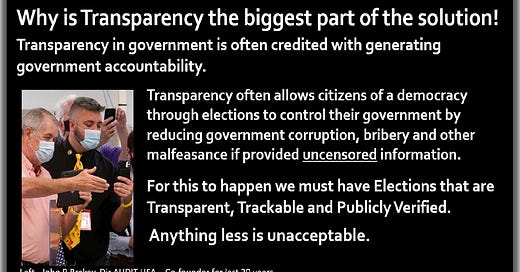




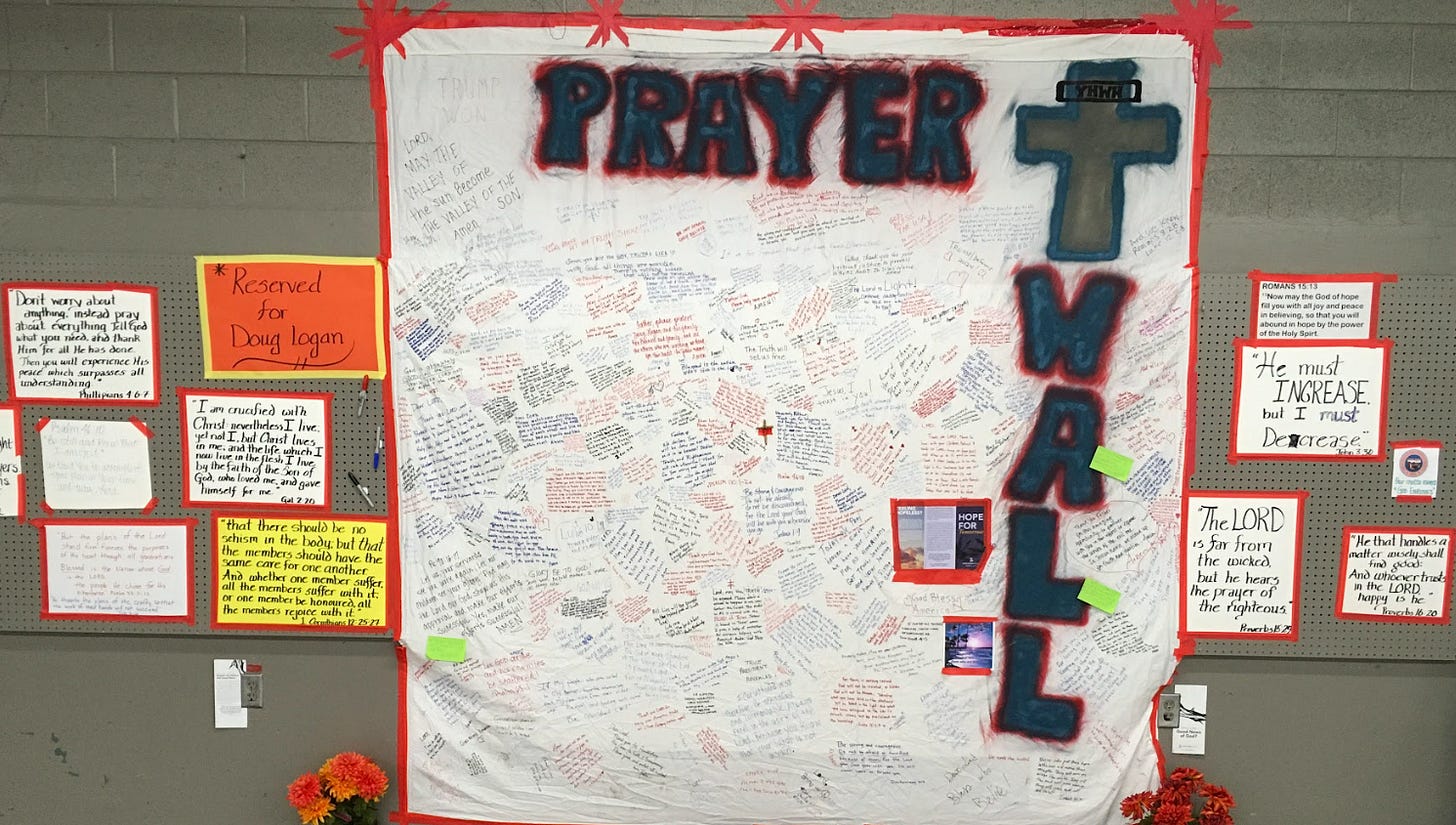






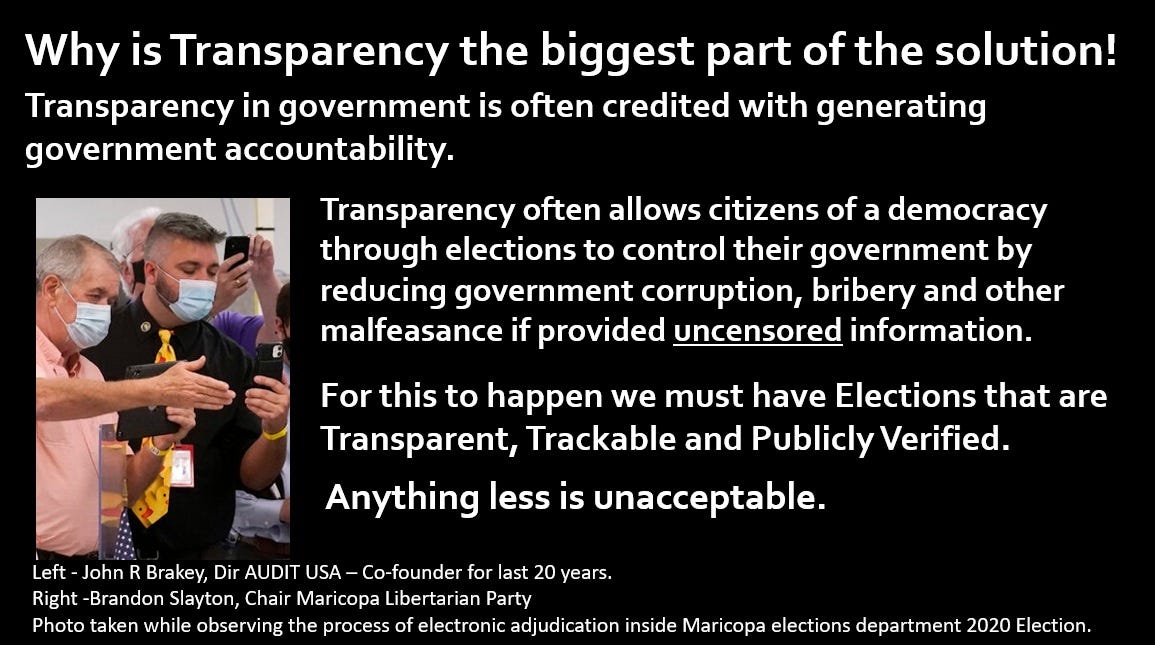

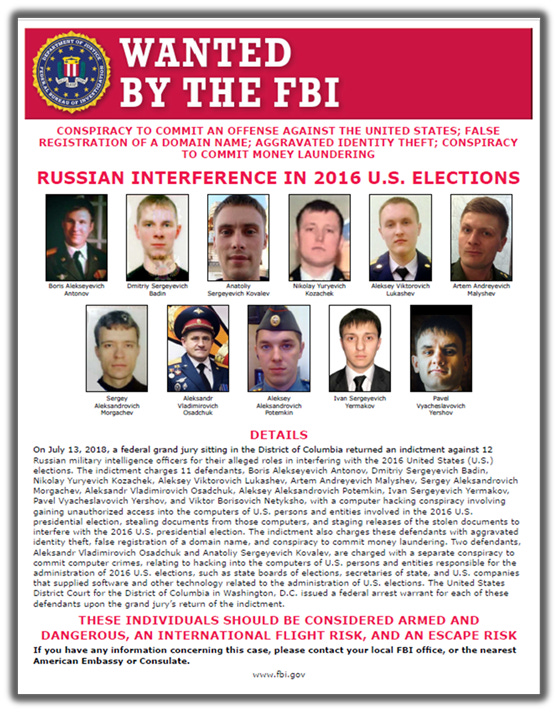

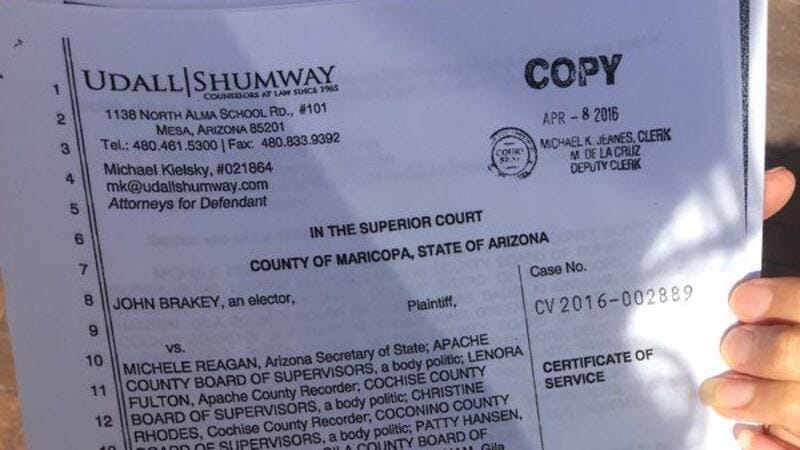





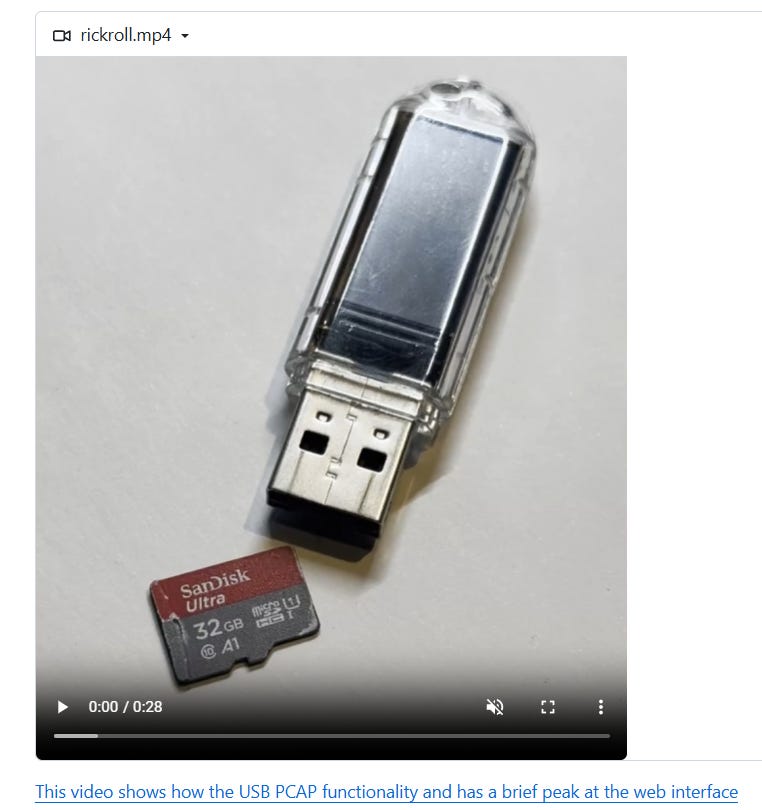

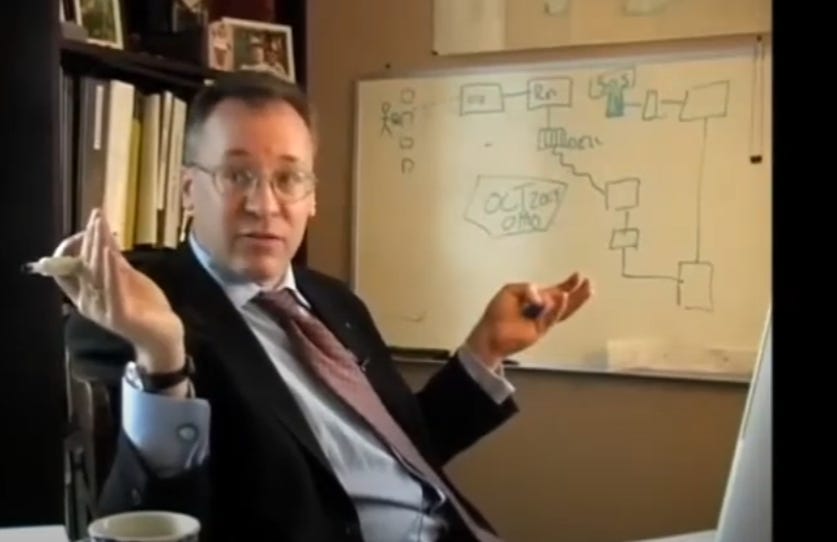

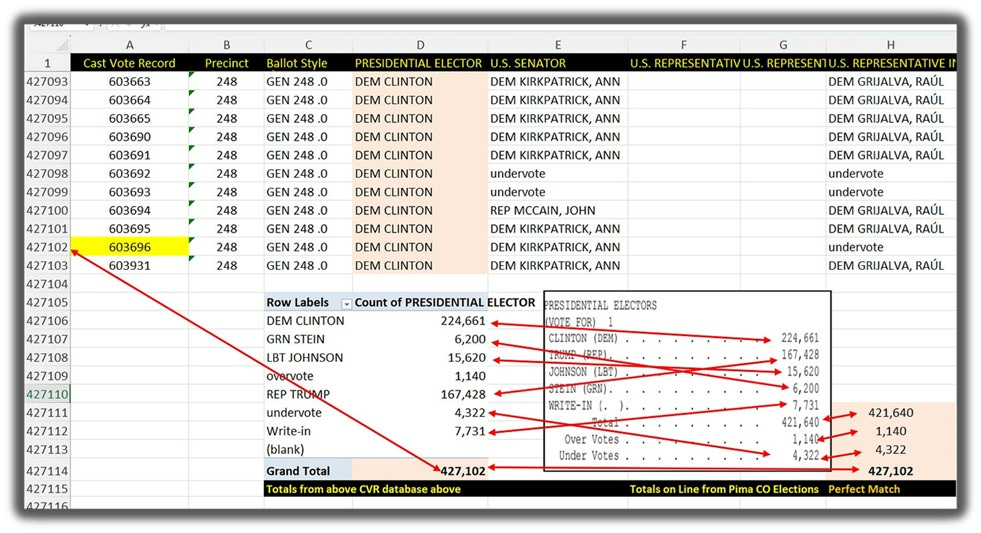





New Chapter Drop! “Understanding the Evolution of U.S Elections” — Chapter 1 of the AUDIT USA Story.
What really goes on behind the scenes of our elections? Chapter 1 takes you deep into the heart of America’s evolving electoral system—from dusty warehouses and courtroom battles insider corruption and unlikely allies.
Follow John Brakey’s 21-year journey that began in Tucson, Arizona and led to uncovering multi-billion-dollar election fraud, a grifter-run audits, and a hidden culture of concealment.
This is the inside story the mainstream won’t tell you—documented with lawsuits, leaks, videos and investigations. Learn how election officials can manipulate systems with no oversight, and why real transparency starts with empowering the people—not hiding the ballots.
Once you understand the problems, you will love the solution, it's really simple it's transparency with a simple verification system. We call it ABE, named after Abe Lincoln.
ABE is an acronym for “A Better Election” – an election that is easily and publicly auditable – and it is also named after Abraham Lincoln, who was a strong believer in transparency and an informed public.
Lincoln made some wonderful statements about truth and transparency, including the following two quotes:
“I am a firm believer in the people. If given the truth, they can be depended upon to meet any national crisis. The great point is to bring them the real facts.”
‘I have faith in the people. They will NOT consent to disunion. The danger is, they are misled. Let them know the truth, and the country is safe.’
Our ABE election audit tool has the ability to fight cynicism and increase the public’s trust in election results by making elections transparent, trackable, and publicly verifiable.
🗳️ This chapter is more than history—it's a wake-up call.
📌 Read it. Share it. Help fix what's broken.
🔗 Read Chapter 1 now
Link to Chapter 1: Understanding the Past to Protect the Future of Elections, Democracy and Our Democratic Republic: ( https://bit.ly/4j2uJcd )